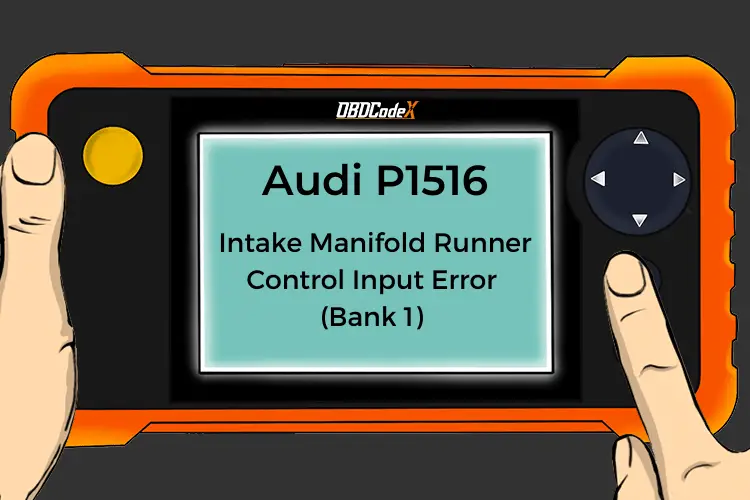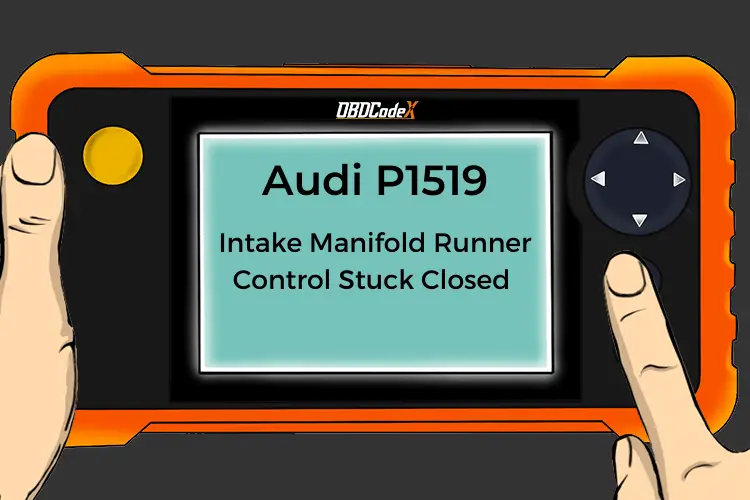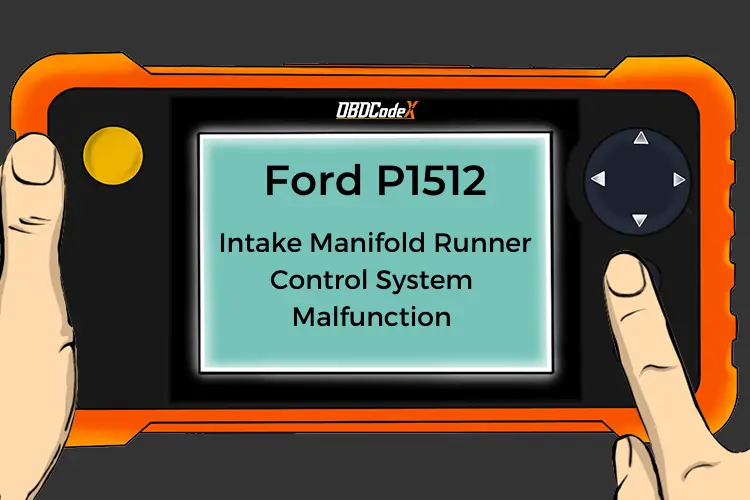P2005: Intake Manifold Runner Control Stuck Open Bank 2
Is your scanner showing P2005?
No worries. We'll show you what it means and how to deal with it.
P2005: Intake Manifold Runner Control Stuck Open Bank 2
OVERVIEWWhat Does The P2005 Code Mean?
A stored code P2005 in your OBD II equipped vehicle means that the powertrain control module (PCM) has detected that the intake manifold runner control (IMRC) actuator for engine bank 2 is stuck in the open position. Bank 2 denotes that the problem has occurred in the bank of the engine that does not contain cylinder #1.
The IMRC system is controlled by the PCM to manage and fine tune air flow as it enters the lower intake manifold, cylinder heads, and the combustion chambers. The runner control solenoid opens/closes metal flaps which fit snugly into the intake port of each cylinder. The runner flaps are bolted to a thin metal rod that runs the length of each cylinder head and through each intake port.
All of the flaps can be opened at the same time and with one motion but this also means that all the flaps may be rendered inoperative if one of them is stuck or binding. The IMRC actuator is attached to the rod with a mechanical arm or a gear. Some models use a vacuum diaphragm operated actuator. An electronic solenoid (controlled by the PCM) regulates intake vacuum to the IMRC actuator in this type of system.
A swirling effect is created by channeling and restricting the air flow as it is drawn into the engine. Research shows that the swirling effect helps the air/fuel mixture to be atomized more completely. More thorough atomization helps to reduce exhaust emissions, improve fuel efficiency, and optimize engine performance.
Automakers utilize different IMRC methods. Consult your vehicle information source (All Data DIY is a good one) for the specifics of the IMRC system with which the vehicle in question is equipped. Theoretically, the IMRC runners are partially closed during starting/idling conditions and opened fully when the throttle plate is opened.
To make sure that the IMRC actuator is functioning properly, the PCM monitors input signals from the IMRC runner position sensor, manifold absolute pressure (MAP) sensor, manifold air temperature sensor, intake air temperature sensor, throttle position sensor, the oxygen sensors, and mass airflow (MAF) sensor (among others).
As engine drivability data is input to the PCM, and calculated, the PCM monitors actual runner flap position and adjusts it accordingly. If the PCM doesn’t see a significant enough change in MAP or manifold air temperature, in accordance with desired repositioning of the flaps (by the IMRC actuator), a code P2005 will be stored and a malfunction indicator lamp may be illuminated. Multiple ignition cycles, with an IMRC actuator failure, will often be required for the MIL to be illuminated.
What Are The Symptoms Of The P2005 Code?
Symptoms of a P2005 code may include:
- Reduction in engine performance, especially at low RPM levels
- Diminished fuel efficiency
- Engine surge
What Are The Potential Causes Of The P2005 Code?
Possible causes for this engine code include:
- Defective bank 2 IMRC actuator solenoid
- Loose or binding intake manifold runners on bank 2
- Bad bank 2 intake manifold runner position sensor
- Open or shorted wiring in the bank 2 IMRC actuator solenoid control circuit
- Faulty MAP Sensor
- Corroded IMRC actuator solenoid connector face
How Can You Fix The P2005 Code?
When attempting to diagnose a code P2005, a diagnostic scanner, a digital volt/ohmmeter (DVOM), and a reliable vehicle information source such as All Data DIY will be required.
Check Technical Service Bulletin
Check technical service bulletins (TSB) for the particular symptoms, stored code/s, and vehicle make and model before beginning your diagnosis. If a related TSB is located, the information therein may help you in diagnosing the P2005 in your vehicle.
I like to start my diagnosis with a visual inspection of system wiring and connector faces. It seems that IMRC actuator connectors are prone to corrosion that could cause an open circuit, so pay particular attention to these.
Retrieve All Stored Codes
Next, I normally connect the scanner to the vehicle diagnostic connector and retrieve all stored codes and freeze frame data. I prefer to write this information down just in case this is an intermittent code; then I’d clear the codes and test-drive the vehicle to see if the code is reset.
Gain Access To The IMRC Actuator Solenoid And IMRC Runner Position Sensor
If the code is reset, gain access to the IMRC actuator solenoid and IMRC runner position sensor. Consult your vehicle information source for testing recommendations for these components. Using the DVOM, perform a resistance test on both components. If either the actuator or the position sensor fails to comply with manufacturer’s recommendations, replace the defective part and retest the system.
If actuator resistance and sensor resistance both comply with manufacturer’s specifications, use the DVOM to test resistance and continuity on all system circuits. To avoid controller damage, disconnect all related controllers before testing. Repair or replace shorted or open circuits as needed.
Additional diagnostic notes:
- Test for IMR flap binding with the actuator disconnected from the shaft
- The screws (or rivets) that secure the flaps to the shaft may loosen or fall out causing the flaps to bind
- Carbon coking inside the intake manifold walls can cause binding
Recommended Parts
Below are some recommended auto parts to help you address the trouble code affecting your vehicle and get it running smoothly again:
>>> APDTY Intake Manifold Runner Control Valve Solenoid
>>> IMRC Sensor
>>> MAP Sensor
>>> WORKPRO 582-piece Crimp Terminals, Wire Connectors, Heat Shrink Tube, Electrical Repair Kit
>>> ECU
>>> INNOVA 5210
>>> KAIWEETS Digital Multimeter
Note: During the purchasing process, please check carefully whether the part you want to buy fits your car!
Reference Sources
Diagnostic Trouble Code (DTC) Charts and Descriptions for P2005 – Page 129.




